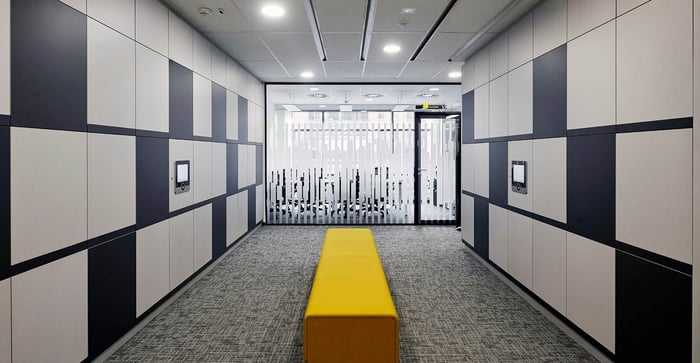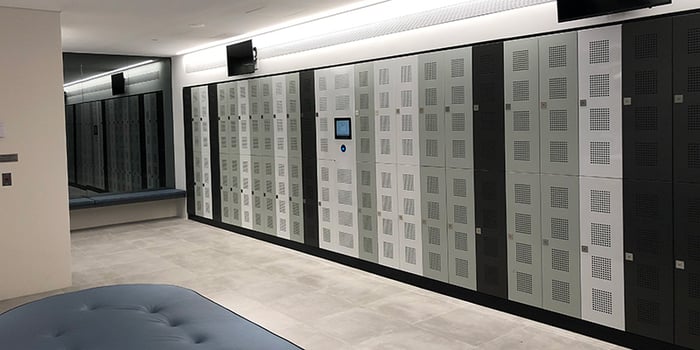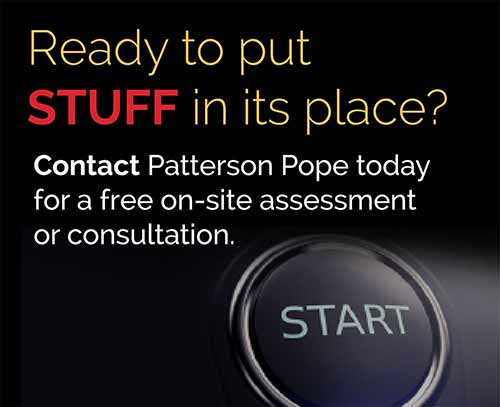When it comes time to renovate or build a new work environment, designers and planners are always looking for flexibility. Providing solutions that work for right now isn’t enough. There needs to be room to adapt and grow. With Agile lockers there’s no one answer that suits everyone. Here’s how these flexible locker systems contribute to business nimbleness.
It’s difficult to predict what a workspace will look like five or 10 years down the road. With the current coronavirus pandemic, it’s more challenging even to anticipate what the environment will need in five to 10 months. This puts more pressure on planning and purchasing decisions.

“Figuring out who will work from home and who will require actual office space, which offices to prune and which to keep, how they will be configured and shared, and precisely where they should be sited,” professor Richard Florida wrote in the Harvard Business Review (HBR) last month, “requires more strategic thought, analysis, and planning than ever.”
Some predictions include:
- Employees splitting their time between work and home. In one survey of managers and decision-makers at nearly 80 companies, “86% said that moving forward, employees will work between one and four days at home.”
- Downsizing of office spaces as companies rethink their real estate footprint with the hybrid workplace model.
- Workplaces will be the focal point for collaboration and creativity rather than “a place where employees automatically report every day.”
- Employees will reserve office space in advance; Starbucks plans to practice this hoteling approach.
- Decentralization of offices to reduce risk of business disruption.
The key thing is that businesses need to be more nimble and dynamic. As work requirements shift, agile lockers can help.
What We Mean By Agile Lockers
First, let’s think of the alternative. Consider the battery-operated lockers of the past. These are configured at purchase. So, even before delivery in the space, you need to decide how many of the lockers will be assigned or unassigned. This is time consuming and difficult to change after configuration. Basically, if your needs change, you’re essentially stuck.
Smart workplace lockers embrace digital technology. They can even be integrated with other smart building tech. Need to change a bank of lockers to accommodate an influx of visitors on a given day? You can configure more unassigned lockers with just a few clicks in the software.

You can also keep track of how these workplace lockers are used. Who uses them? Where are they used most? For how long? This kind of data can help you determine how to adapt short-term and what needs to change going forward.
These lockers are also touch-less. Smart lockers can be opened with a scan of a badge, fob, keycard or using a smart app. Then the individual only needs to push the locker closed again with an elbow. Available also in antimicrobial finishes and removing the keypads and grooves of old, these lockers are also easier to clean and disinfect.
How Agile Lockers Promote Flexibility
Agile work environments maximize space utilization and efficiency. Since the workplace is going to focus more on creativity and collaboration, people need access to the entire office. Agile seating is a natural replacement for assigned seating because it allows employees to interact with the workplace on their terms. Instead of sitting and working in a way that’s not conducive to their work style or schedule, they’re free to leverage the workplace as a resource.
The conference room won’t be the only place people can collaborate any longer. They might start there, but then break into teams to brainstorm in smaller groups. Agile lockers can be incorporated into these flex spaces along with whiteboards or multimedia technologies. They help create boundaries. But, instead of going floor to ceiling they might be topped with plants to make the spaces more natural and enticing.

Agile lockers also improve the employee experience when they are onsite. Since the days of assigned cubicles or offices are dwindling, lockers for hoteling give people somewhere to store their stuff on the days they do come into work. With locker app technology they even gain the ability to reserve a locker just as they would a workspace. Some buildings will even offer a range of lockers including:
- Variety of sizes
- Reservation duration
- Different areas of the workspace
- Lockers with charging stations
- Temperature-controlled lockers (e.g. for people with medical needs)
Agile lockers can even be configured (administratively in the software) to provide the contactless exchange of goods. Delivery lockers can be used for a variety of things such as food delivery and pick up, exchange of IT equipment, packages and more.
Conclusion
The new workspace is going to require building administrators to react to changes and move forward in new ways. In addition to rethinking the way we’re working, there’s a need for reacting with speed. With smart lockers, decision makers can make hybrid work (ahem) work based on data.
React to utilization or capacity to handle employee needs. Provide your people with security and convenience with agile lockers. Obviously, we’re not saying smart locker apps are the only answer. But they can sure make a difference. Find out more from our storage solution experts today!












